Redstone Quarry Trailhead
Introduction
Text-to-speech Audio
This is the parking area and trailhead for the historic Redstone Quarry. According to an article by Rick Russack and Steve Swenson, the granite quarries on Rattlesnake Mountain in Redstone (part of the town of Conway), together with substantial remains of buildings and machinery dating back to the late 1800s constitute one of the most significant industrial archeological sites in New Hampshire. Visiting the area is like taking a step back in time. Portions of two tall wooden derrick masts remain standing in the Green Quarry, barely supported by old guy wires dangling in the trees, while coils of wire cable lie rusting on the ground. Many other derrick booms and masts rotted on the ground where they fell when operations ceased in the late 1940s. Large lathes used to turn and polish granite columns are rusting away among the trees that are reclaiming the area. Shells of some original buildings remain.
Images
Trail head Redstone Quarry
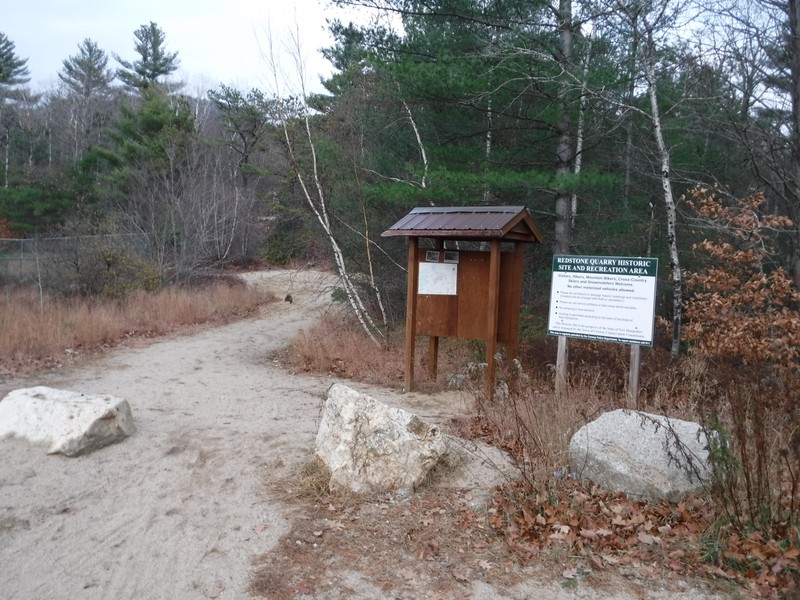
Entrance sign
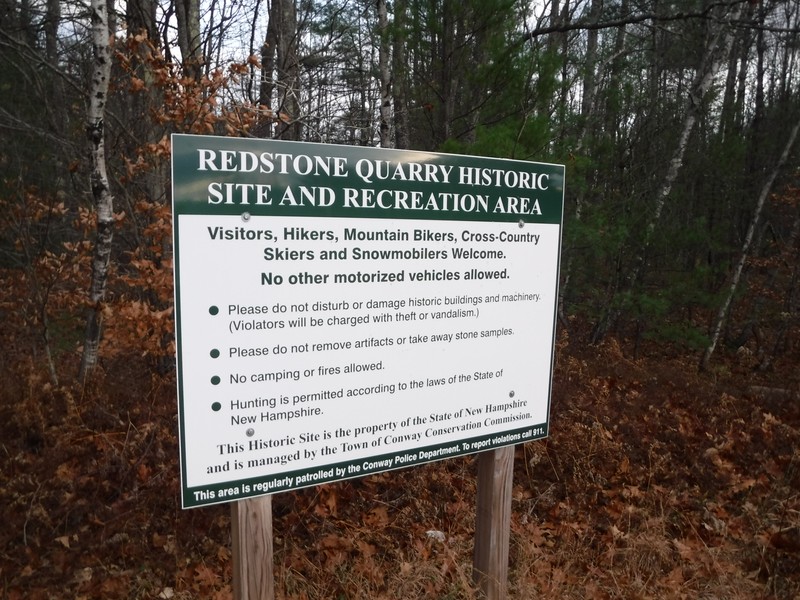
Lathe turned "green" granite pilaster
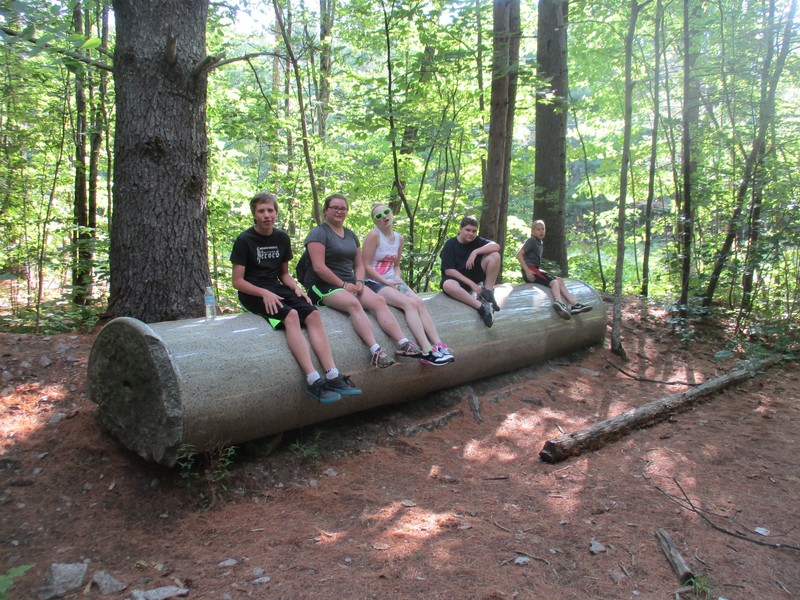
Lathe that turned the "green" granite pilaster
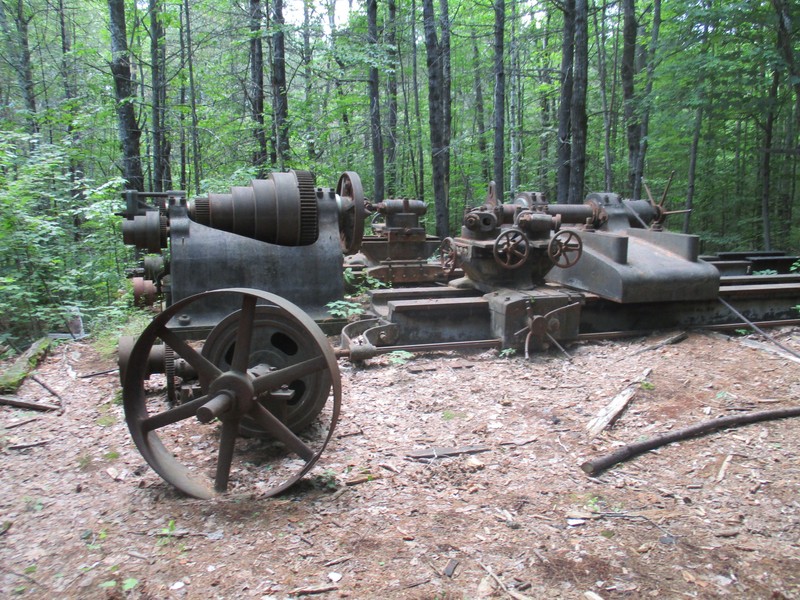
Quarry from which granite was taken. Note the two derricks.
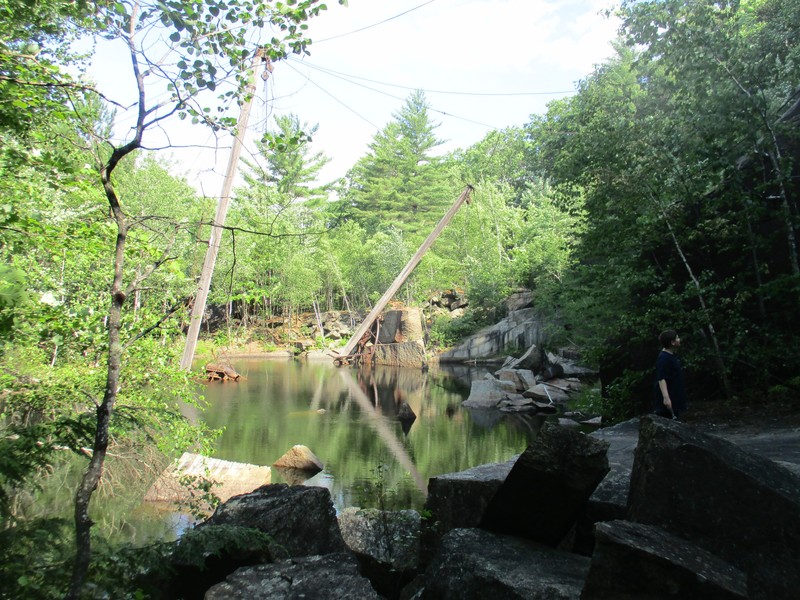
Backstory and Context
Text-to-speech Audio
Much more information can be found through the Conway Public Library's Henney History Room and the Conway Historical Society, including maps, photos, archives, and tools used in the quarry. Free guided tours and public PowerPoint presentations are available for local school and community groups.
Standing exposed to the elements, two large rusting coal-fired boilers, along with two giant air compressors, are fast becoming obscured by vegetation. The building that once housed them is gone. These boilers generated steam to run air compressors that once supplied air at high pressure for pneumatic tools and machinery in the quarries and stone sheds. Portions of the piping used to distribute the compressed air can still be found on the ground. Some sections of the railroad track remain. Gravity railroads, or tramways, transported heavy granite blocks from the quarries to the once-busy stone yard and sheds at the mountain's base for processing. Over three hundred men once worked in the quarries, yard, and finishing sheds. Old photos show these buildings, including the main stone shed, a substantial wooden building over 300 feet long, which was destroyed by fire in 1930. The Maine Central Railroad brought in raw materials and supplies, and the finished product was shipped by rail.
